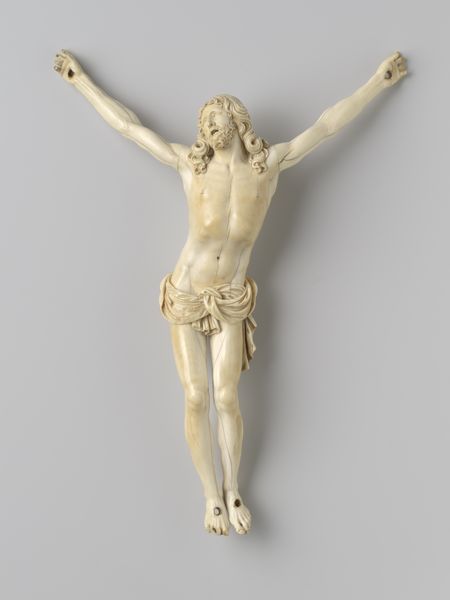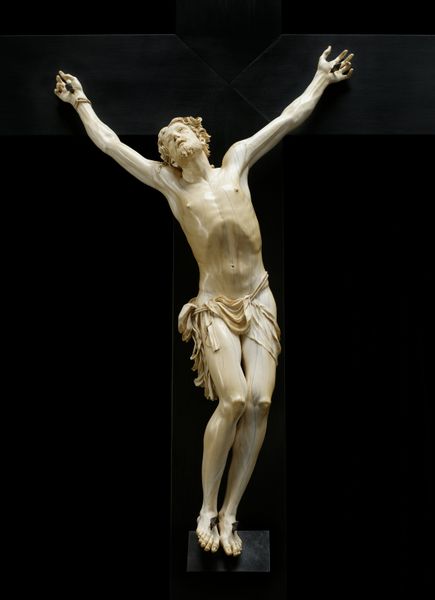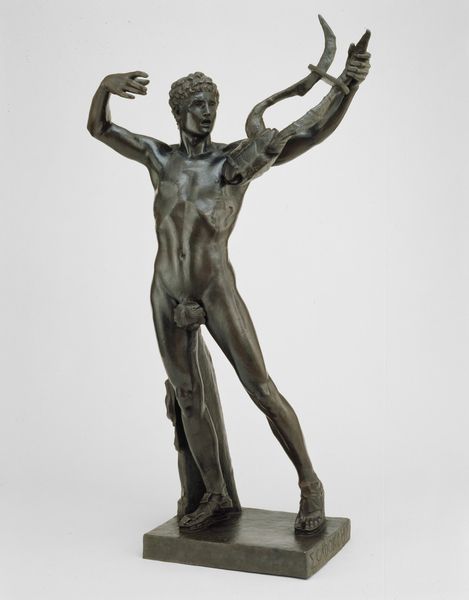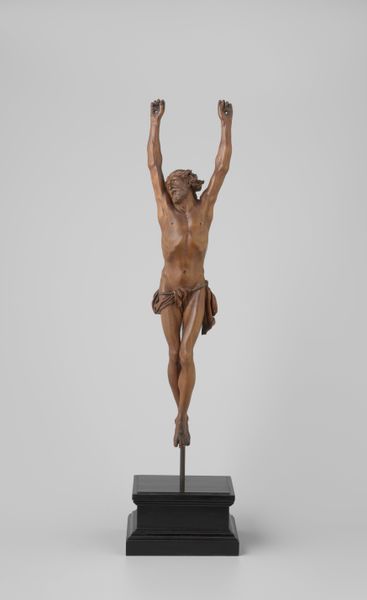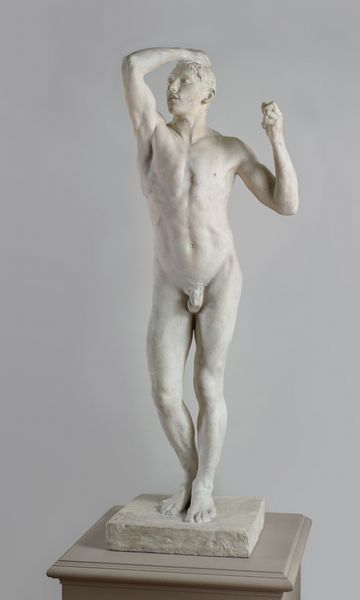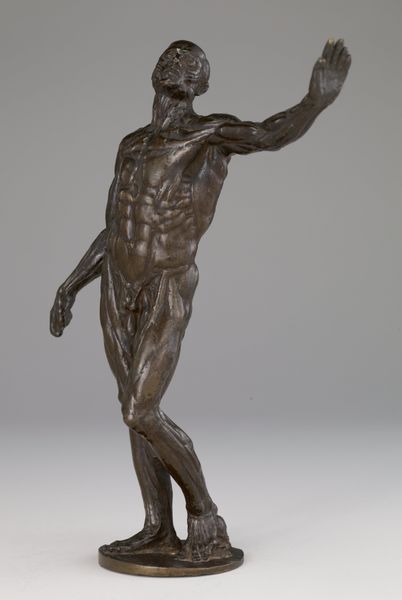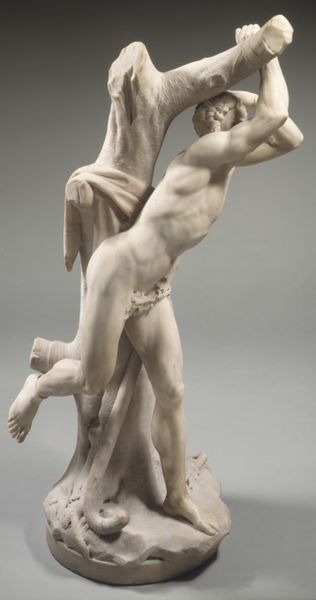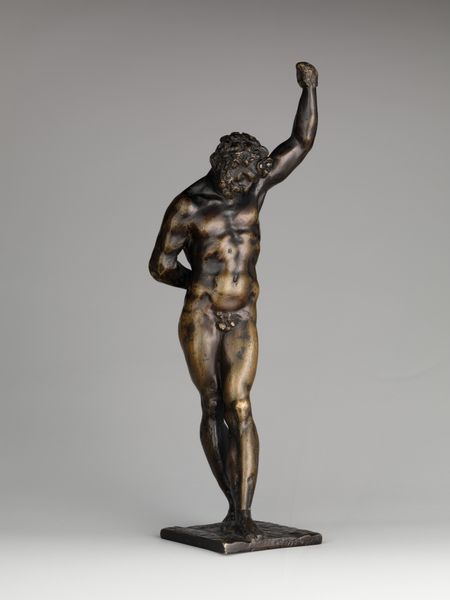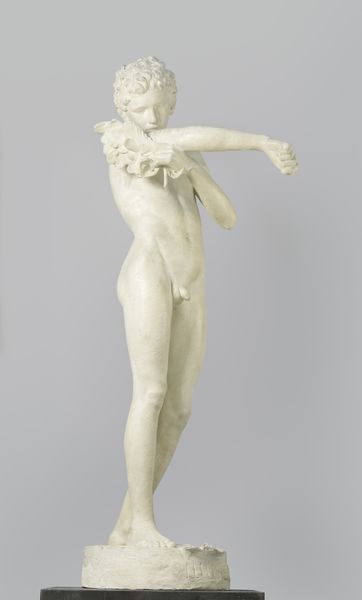
ceramic, porcelain, sculpture
#
baroque
#
sculpture
#
ceramic
#
porcelain
#
figuration
#
sculpture
#
decorative-art
#
nude
Dimensions: Overall (confirmed): 13 3/8 x 8 5/16 x 1 3/4 in. (34 x 21.1 x 4.4 cm); Other (cross): 18 7/8 in. (47.9cm)
Copyright: Public Domain
Editor: Here we have "Corpus from a Crucifix," crafted from porcelain by the Nymphenburg Porcelain Manufactory between 1750 and 1760. It’s currently held at the Metropolitan Museum of Art. The stark whiteness of the porcelain against the form of Christ really emphasizes the sculpture's vulnerability. What strikes you most about this piece? Curator: The power in this sculpture lies within its lines and the dynamic interplay of form. Note how the upward reach of the arms is mirrored by the drape of the loincloth, creating a visual tension that is quite Baroque. What do you observe about the musculature? Editor: I see the strained muscles, but they feel almost idealized, like a classical sculpture, but imbued with suffering. Curator: Precisely. There is a dialogue here between the classical ideal of the body and the Baroque drama of emotion. Look at the detail in the rendering of the ribcage, juxtaposed with the smoothness of the porcelain. This juxtaposition amplifies the emotional resonance of the work. How might this material choice, porcelain, affect our understanding of the work? Editor: Porcelain gives it a delicate, almost ethereal quality that might not be achieved with marble or bronze. It makes him seem even more fragile. Curator: Indeed. The choice of porcelain invites us to consider themes of purity and suffering. It transcends mere representation and becomes a study in form and material. This is what makes the piece so compelling. Editor: Seeing how the material enhances the themes, I hadn’t considered that before. Curator: Formal analysis allows us to see how an artist communicates through material and form, expanding our understanding and appreciation of the artwork itself.
Comments
No comments
Be the first to comment and join the conversation on the ultimate creative platform.

